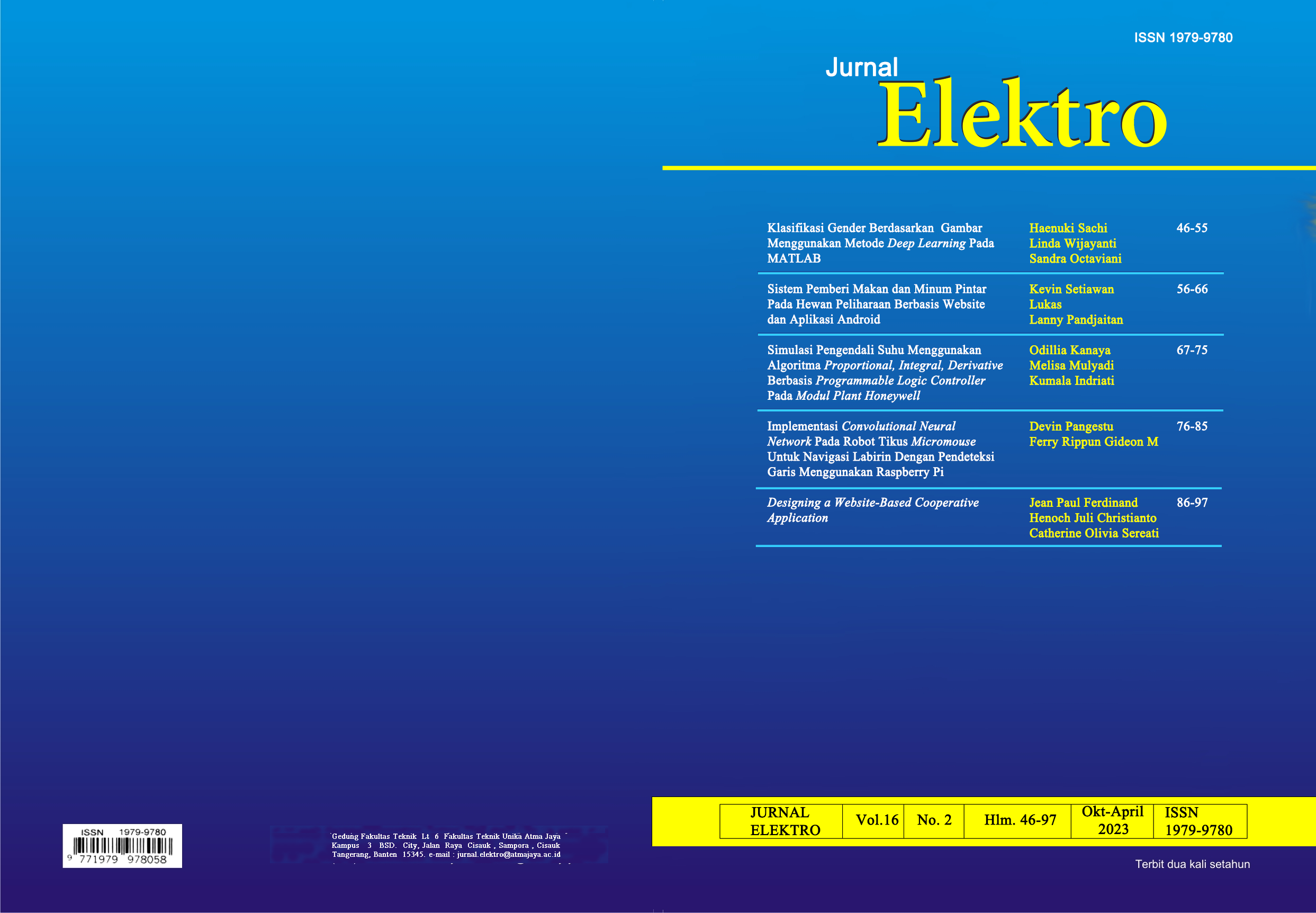Implementasi Convolutional Neural Network Pada Robot Tikus Micromouse Untuk Navigasi Labirin Dengan Pendeteksi Garis Menggunakan Raspberry Pi
DOI:
https://doi.org/10.25170/jurnalelektro.v15i2.5113Keywords:
Convolutional Neural Network, Line Detector, Micromouse, Raspberry PiAbstract
Micromouse is a science and technology project competition that began in the late 1970s. Simply put, the micromouse competition is an event where robotic mice can navigate a 16x16 maze without human assistance. Convolutional Neural Network, also known as CNN, is an extension of the Artificial Neural Network (ANN) designed to process two-dimensional data and is often used for classification, recognition, and prediction tasks. In the conducted research, a robotic mouse was designed using Raspberry Pi to control servo motor movements and utilize a camera to detect maze obstacles, such as intersections, through image scanning. The robotic mouse was tested using a CNN architecture model on TensorFlow, assisted by a line detection algorithm. The testing results indicated that the CNN model architecture showed signs of overfitting (the model learned features too well from the training data) with an accuracy of 96.53%, and the model accuracy evaluation result was 97.97% on the designed dataset. As part of the testing, a maze size of 5x5 was used. The testing of the Convolutional Neural Network model and line detection algorithm, when applied to the robotic mouse, demonstrated that the mouse could navigate according to the path. However, the recorded data was influenced by external light reflecting off the surface of the path, causing the line detection algorithm to perceive it as an obstacle, leading the robot to turn back..
References
R. Misra and R. Adler, "Micromouse Competition Rules," IEEE, 2018.
E. W. Prasetyo, N. Hidetaka, D. A. Prasetya, W. Dirgantara and H. F. Windi, "Spatial Based Deep Learning Autonomous Wheel Robot Using CNN," Lontar Komputer, vol. 11, no. 3, 2020.
R. M. Wang, "Application of IEEE Standard Micromouse in the Engineering Practice Teaching," RESEARCH AND EXPLORATION IN LABORATORY, vol. 33, no. 9, pp. 117-121, 2014.
M. A. Pangestu and H. Bunyamin, "Analisis Performa dan Pengembangan Sistem Deteksi Ras Anjing pada Gambar dengan Menggunakan Pre-Trained CNN Model," Jurnal Teknik Informatika dan Sistem Informasi, vol. 4, no. 2, pp. 337-344, 2018.
J. Feng and S. Lu, "Performance Analysis of Various Activation Functions in Artificial Neural Networks," Journal of Physics Conference Series, vol. 1237, no. 2, 2019.
M. G. Abdolrasol, S. M. Hussain, T. S. Ustun, M. R. Sarker, M. A. Hannan, R. Mohamed, J. A. Ali, S. Mekhilef and A. Milad, "Artificial Neural Networks Based Optimization Techniques: A Review," Electronics, vol. 10, no. 21, 2021.
D. P. Kingma and J. Ba, "Adam: A Method for Stochastic Optimization," arxiv, vol. 9, 2014.
H. G. Zhu, "An Efficient Lane Line Detection Method Based on Computer Vision," Journal of Physics: Conference Series, vol. 1802, 2021.



